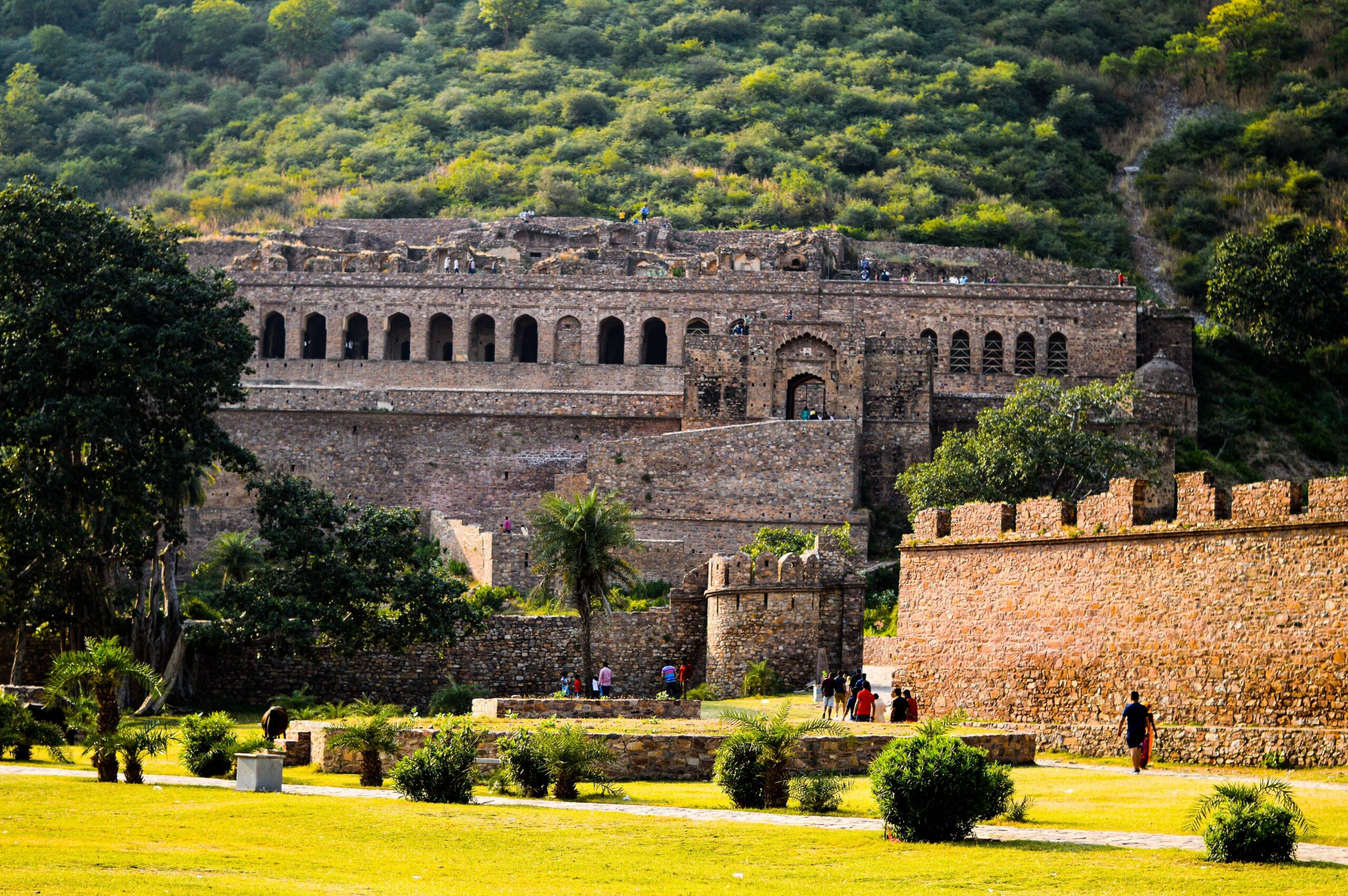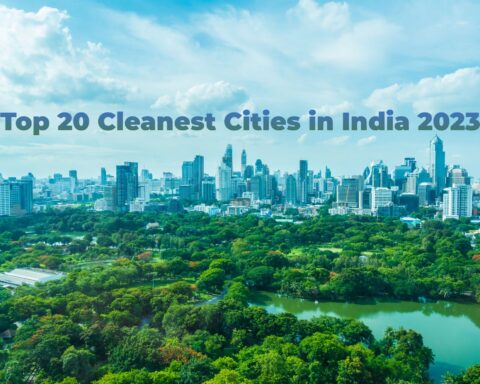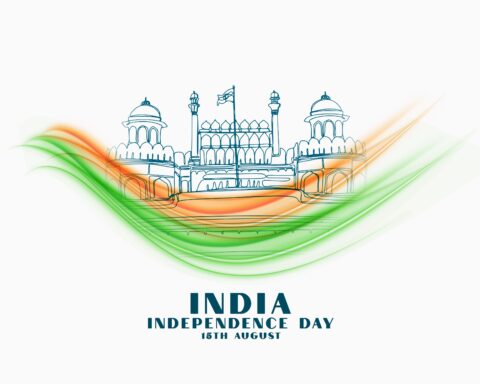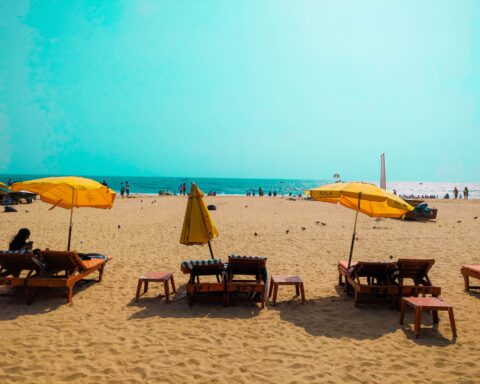People travelling to places and staying outside their usual environment for leisure, business, or other purposes for more than one year is part of tourism. Service sector tourism has become one of the important sources of money. India has seen a rapid increase in tourism in the past decade in addition to specialty forms of tourism that have also emerged over time. niche tourism has grown in this sector.
According to Malcolm Foley and John Lennon, dark tourism involves travelling to places historically associated with death and suffering (1996). Individuals are drawn to dark locations for their historical value, rather than their association with death and suffering. Because of this, this type of tourism is also known as “Grief tourism” or “black tourism”. Some of the motives for visiting this place include remembering the tragedy and its consequences, interest in human psychology, desire to pay respect to the deceased, etc.
People nowadays travel between locations both domestically and internationally for a variety of reasons, including business trips, leisure, pilgrimage, meeting friends and relatives, fairs and festivals, relaxation, adventure, sports, and economy diversification. Tourism is a very dynamic industry that has to deal with ever-changing consumer demands and a constant emphasis on consumer satisfaction. Tourism creates employment, leads to infrastructure development, foreign exchange, economic diversification, cultural awareness, preservation of natural resources, and more.
A person’s choice of vacation has changed over the years, and now tourists are interested in particular interest tourism. Special interest tourism centres on viewing and experiencing something unique with a goal in addition to viewing or enjoying scenic beauty. It provides a variety of tourism activities that are tailored and specifically targets those with particular interests. It provides a wide range of experiences including rewarding, adventurous, and educational.
India’s tourism industry is an important agent in both economic and social change. The country’s rich cultural heritage and travel and tourism have always been a part of the country. In recent years the country has enjoyed a considerable surge in tourism. We have Himalayan mountains, beaches, valleys, deserts, wildlife, and forests, all of which have healing powers and provide a unique experience. According to the forecast, the sector of tourism is expected to increase by 6.9% to 32.05 lakh crore (US$460 billion) by 2028 (9.9% of GDP). In addition, jobs have been created in many sectors as a result of the increase in foreign direct investments in tourism. The “Atithi Devo Bhava” programme, introduced by the Government of India, teaches all the parties the value of tourists and tourist places. It teaches people to appreciate the importance of preserving nature, culture, heritage, and hospitality in particular.
Since 2002, the Indian government has launched the Incredible India campaign to promote tourism. The campaign showcased different facets of the country, including art, music, yoga, spirituality, India’s unique culture, and so on. Because India is so diverse, there are numerous options for travellers who want to visit India. There are several varieties of tourism in India, including cultural tourism, historic tourism, spiritual tourism, religious tourism, health tourism, yoga tourism, eco-tourism, and many other types of tourism. Sports tourism, village tourism, adventure tourism, and recreational tourism are just a few examples.
According to Foley and Lennon (1996), dark tourism is a form of tourism that involves travelling to locations associated with death and disaster. People are increasingly interested in dark tourism in recent years because of their strong curiosity about death (Lennon & Foley, 2000). Dark tourism is still a fresh concept for the tourism industry. The idea behind heritage tourism is to combine history, heritage, tourism, and suffering (Niemela, 2010). Places that have endured social and political upheavals or conflicts or remember tragic historical significance and emotional resonance are considered to be part of this category. These destinations were formerly used as a location for a very violent act in a very dark period in history. Because of this, they are known as black tourism or grief tourism. Stone opened the Institute for Dark Tourism Research (iDTR) as the world’s first academic centre in this field.
Dark Tourism may also be experienced in a variety of ways, such as:
#1. Grave tourism
#2. Prison and Persecution site tourism
#3. Natural disaster area tourism
#4. Modern Political sites
#5. Industrial Disasters
In roman era, audiences took keen interest in gladiator fights and enjoyed them with full enthusiasm, which is evident from the fact that from medieval times to the nineteenth century, there used to be large gatherings whenever there was any public execution. It can also be seen from the facts that from medieval times to the nineteenth century, audiences took keen interest in public executions and enjoyed them with full enthusiasm. As Rome’s Colosseum was the first location of dark tourism for those interested in tourism linked to death and destruction, the first research on the topic was published in an international journal of science of cultural and heritage in 1996.
According to researchers, dark tourism involves psychological exploration of tourists, but pilgrimage has a sacred function. Dark tourism is commonly connected with heinous historical events and might be focused on simply obtaining social and economic status. In the present day, dark tourism has developed into one of the most desirable sorts of tourism. Auschwitz Concentration Camp, Poland, Hiroshima and Nagasaki, Japan, Ground Zero, New York City, the United States, Cu Chi Tunnels, Saigon, Vietnam, are a few of the world’s most renowned dark tourism locations.
The seven suppliers or seven foundations of dark tourism are as follows:
#1. Dark Fun Factories:
These are locations that provide thrills by focusing on the superficial deaths caused by business and financial principles. They have good tourist infrastructure. For example, the Dracula Park in Romania.
#2. Dark Exhibitions:
This idea provides tourists with death-related experiences but only for educational and learning purposes. There are locations, sites, and exhibits that display death and suffering.
#3. Dark Dungeons:
These are the places and sites that are defined as criminal history and mistreatment. These are again places that purely educate tourists on history of destination. For example, prisons
#4. Dark Shrines:
They are not so popular websites. They are located nearby to the sites of death and misery. They look very brutal and are certainly not at all eye-catching. They are visited only to pay respect to the deceased.
#5. Dark Resting Places:
To pay respect to the loved ones, these are usually visited cemeteries and graveyards.
#6. Dark Conflict Sites:
These are destinations that are linked to significant events in history. Battles were fought at these locations, and now they draw significant numbers of visitors. An example is the Battle of Jhansi.
#7. Dark places of mass killing:
There are sites where there is suffering, death, and atrocities, and these are grouped into the darkest and lightest sites.
One can glean from this information that fears, insecurity, love, humanity, sympathy, and superiority are some of the psychological motivations that lead tourists to visit dark locations and sights.
Must Read: Unheard and Unprotected Mystery of Bijapur, Is in Need of Attention! by Navya.M.S
List of places where people go to experience the dark tourism places in India
The history of India is so rich that dark tourism is sure to be popular. From natural disasters, wars, civilizations, poverty, cultural diversity, kingdoms and empires, superstitions, and freedom struggles, India has seen all sorts of unfortunate things. There is therefore a lot of potential for dark tourism in the country. There are plenty of destinations that could be marketed as dark tourist spots, particularly those that have witnessed some kind of event in the past. By drawing in large numbers of domestic and foreign travellers, these places can be made into dark places for tourists.
In India, deep tourism is focused on ghastly places.
#1. Bhangarh Fort Rajasthan-
View this post on Instagram
The fort in Alwar district in Rajasthan is strictly closed after sunset and nobody is allowed to enter until sunrise. It is said that a Tantrik cursed the fort, making it the most haunted in India.
#2. Jallianwala Bagh, Amritsar-
View this post on Instagram
It is a historical place in India and a memorial in the memory of more than 1500 people who lost lives or got injured during the Jallianwala Bagh massacre. The walls of the Jallianwala bagh still display 36 bullet marks, which are visible as bolts.
#3. Dumas Beach, Gujarat-
View this post on Instagram
It is a beach in India that is ranked in the top 35 haunted places in India. After the sunset, people hear howling or laughter sounds on the beach.
#4. Three Kings Church, Goa-
View this post on Instagram
People say that the Church of the Annunciation is located in Chondor, South Goa and dates back to the 15th century. They believe that the church is in the grip of evil spirits and that people have experienced unusual activity within it.
Calangute Beach Goa: Top Attractions, Things to Do, and Best Time to Visit
#5. Roopkund, Uttarakhand –
View this post on Instagram
The mystery lake known as skeleton lake is surrounded by glaciers and snow mountains. When the snow melts, Roopkund’s human skeletons can be seen at the lakes’ bottom.
Must Read: 31 Best Treks in the Himalayas You Must Do in 2022
#6. Shaniwarwada, Pune-
View this post on Instagram
On historic Pune fort, the Peshwas ruled before they lost the Third Anglo-Maratha War. People are advised not to visit the place after sunset because it is believed that some evil spirit resides there, especially on full moon nights where people may hear loud cries.
#7. Cellular Jail, Andaman Nikobar Island-
View this post on Instagram
In colonial India, Kala Pani was a notorious prison where freedom fighters, or activists, were incarcerated and punished. Today this spot is a national memorial. The Vir Sawarkar Smaran Yatra educates the public about the life of a brave freedom fighter, Vir Sawarkar.
#8. Tajmahal Palace Hotel Mumbai-
View this post on Instagram
On November 26, 2008, Tajmahal palace and hotels in Mumbai survived one of the most horrific terrorist attacks ever. Many tourists now visit Mumbai
particularly around Tajmahal palace and the hotel where they are given a tour showing the locations where incidents occurred.
Must Read: 3 Places in Kolkata to Scare You to the Core!
The problems that Dark Tourism in India is facing
There are several locations throughout India that are considered to be negatively viewed by society. These locations are known as dark tourism destinations, and they represent significant areas of death and destruction in India’s history. The motive of tourists is to explore the psychological effects of visiting these sites, which creates a difficulty for people to accept. There is a lack of understanding and knowledge about dark tourism, and also a difficulty with regard to cultural values, ethics, and values and morals of the people of India, which has prevented it from being marketed well. Dark tourism locations are not well promoted, and there are no proper services for tourists at these places. Because they are not well advertised, they are not accessible to tourists. The Indian department of tourism has not established policies for dark tourism sites.
Conclusion
The aim of the article is to discover the foundations of dark tourism. People are becoming increasingly fascinated by dark tourism, which is aiding to boost tourism and contribute to socio-economic development. This kind of tourism is often associated with other aspects. Dark tourism encompasses a variety of sites with little or no connection, which makes them popular. The report says that there is still a problem of values and ethics when it comes to promoting dark tourism in India. Graduate students and undergraduates of tourism studies can also now include dark tourism in their curriculum. It is also drawing the attention of PhD researchers. Dark tourism has become a frequent topic for magazine articles and newspaper write-ups due to its visibility. Places that are not particularly attractive to tourists because of various reasons may boost their economy through tourism by promoting dark destinations as a tourist destination. Very little literature on dark tourism is available, so a small study was done on Indian tourism.
Author Bio –
Mrs. Priyanka Shetty
Assistant Professor, Tilak Maharashtra Vidyapeeth Department of Hotel Management
The article you are viewing was written by Priyanka Shetty and first appeared on International Journal of Disaster Recovery and Business Continuity.





That is the best weblog for anybody who wants to seek out out about this topic. You notice a lot its virtually laborious to argue with you (not that I really would want…HaHa). You undoubtedly put a brand new spin on a subject thats been written about for years. Great stuff, just nice!
Hey, I really love your content, the amount of detail and information you have provided is incredible. Also if you are a avid traveller and looking for best price for your hotels and flight tickets. Then check us out on and start your journey today.